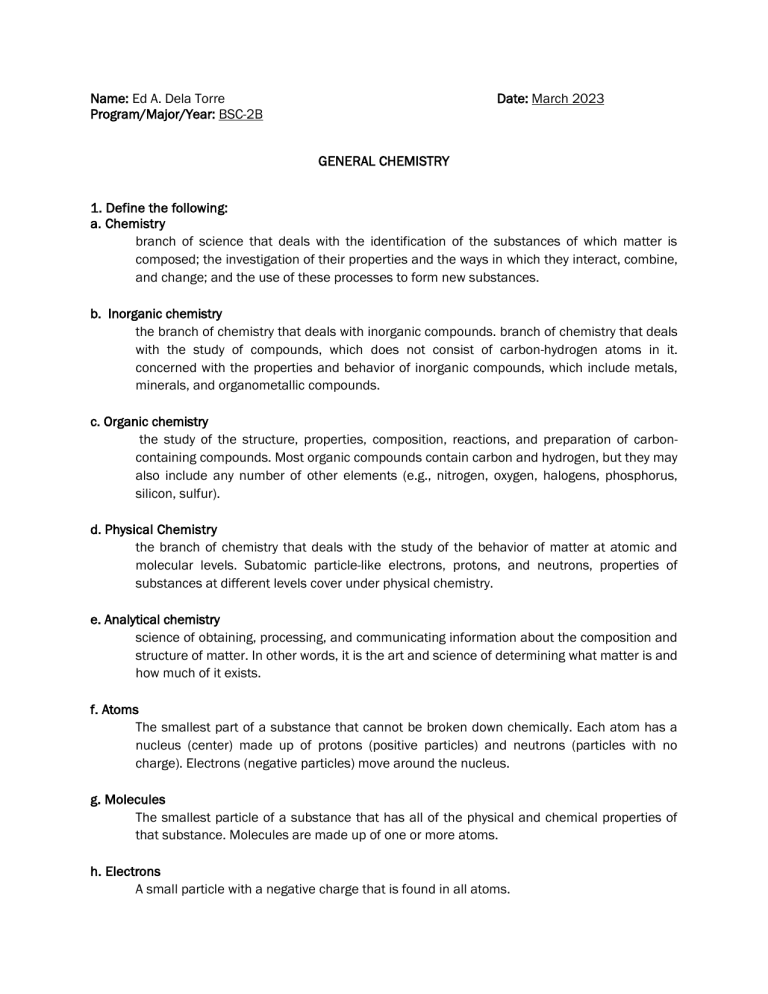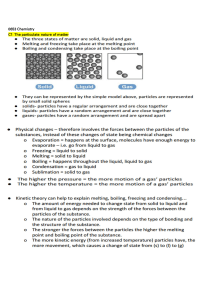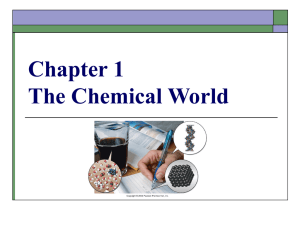General Chemistry Homework: Definitions & Expectations
advertisement

Name: Ed A. Dela Torre Program/Major/Year: BSC-2B Date: March 2023 GENERAL CHEMISTRY 1. Define the following: a. Chemistry branch of science that deals with the identification of the substances of which matter is composed; the investigation of their properties and the ways in which they interact, combine, and change; and the use of these processes to form new substances. b. Inorganic chemistry the branch of chemistry that deals with inorganic compounds. branch of chemistry that deals with the study of compounds, which does not consist of carbon-hydrogen atoms in it. concerned with the properties and behavior of inorganic compounds, which include metals, minerals, and organometallic compounds. c. Organic chemistry the study of the structure, properties, composition, reactions, and preparation of carboncontaining compounds. Most organic compounds contain carbon and hydrogen, but they may also include any number of other elements (e.g., nitrogen, oxygen, halogens, phosphorus, silicon, sulfur). d. Physical Chemistry the branch of chemistry that deals with the study of the behavior of matter at atomic and molecular levels. Subatomic particle-like electrons, protons, and neutrons, properties of substances at different levels cover under physical chemistry. e. Analytical chemistry science of obtaining, processing, and communicating information about the composition and structure of matter. In other words, it is the art and science of determining what matter is and how much of it exists. f. Atoms The smallest part of a substance that cannot be broken down chemically. Each atom has a nucleus (center) made up of protons (positive particles) and neutrons (particles with no charge). Electrons (negative particles) move around the nucleus. g. Molecules The smallest particle of a substance that has all of the physical and chemical properties of that substance. Molecules are made up of one or more atoms. h. Electrons A small particle with a negative charge that is found in all atoms. h. Electrons A small, positively charged particle of matter found in the atoms of all elements. I. Protons an uncharged atomic particle that has a mass nearly equal to that of the proton and is present in all known atomic nuclei except the hydrogen nucleus. j. Neutrons Lewis structures, also known as electron-dot or electron-dot diagrams, are diagrams showing the bonding between a molecule's atoms and the lone pairs of electrons that may occur in the molecule. l. Compounds a substance made from two or more different elements that have been chemically joined. Examples of compounds include water (H2O), which is made from the elements hydrogen and oxygen, and table salt (NaCl), which is made from the element’s sodium and chloride. m. elements refers to a simple substance that cannot be broken down into smaller parts or changed into another substance 2. What do you expect to learn from this subject of Chemistry? To gain an understanding about chemistry such as atomic structure, molecular structure, chemical bonding and acids and bases. To know if chemistry can be applied in real-life situations except in the field medicine because we all know chemistry is the foundation in the field of medicine. Also, I expect that in this subject how chemistry can help me understand how our world works and lastly what is the importance of chemistry.






